Brief

Auf einen Blick
- Just as Amazon is expected to launch a basic account through a banking partner, Bain’s new survey finds that US consumers give Amazon much higher loyalty scores than they give banks.
- Among Amazon Prime respondents, 65% would be willing to try a free online bank account offered by Amazon. Even among people who don’t buy through Amazon, 37% would be willing to try.
- Amazon customers are quite valuable. They control 75% of US household wealth, and account for about 75% of the wealthiest households’ assets.
- To stay competitive, banks will need to innovate with their offerings while continuing to take out “bad” costs and complexity.
Explore Bain’s latest Customer Loyalty in Banking insights.
The battle for US retail banking customers is intensifying as technology firms expand in payments and Amazon is expected to partner with a bank to offer a cobranded, mobile-friendly, checking-account-like product initially targeted to young adults, according to news reports. Traditional banks are struggling to maintain their appeal, new consumer research by Bain & Company in collaboration with Research Now shows, just as retail banks are entering a war for deposits in a rising interest-rate environment, and many are launching digital direct banks.
Amazon in particular has many advantages: a high and rising frequency of purchasing, viewing, listening and reviewing interactions with customers; a full commercial relationship, including credit cards on file; integration into consumers’ computers, smartphones, tablets, TVs and home audio devices; a paid membership program with 90%-plus renewal rates and the majority of US households as members; excellent service, including a great returns policy; and no major security breaches so far. Amazon has the potential for a light physical-branch footprint in the form of its Whole Foods Market network, which could feature shelf space to sell products, advanced video ATMs or service kiosks.
The company also has earned a healthy dose of trust, which is critical in financial services. Bain’s survey of US and UK consumers earlier this year ranked Amazon nearly as high as banks for trust with their money.
Now we find further evidence of Amazon’s excellent position to expand in financial services, through a new survey of 6,000 US consumers that makes the first direct comparison of customer loyalty scores for Amazon and US banks. Consumers give Amazon a Net Promoter Score® of 47, significantly higher than the score of 31 for regional banks on average, or 18 for the national bank average (see Figure 1).
Amazon has earned greater loyalty than traditional banks, though it trails USAA

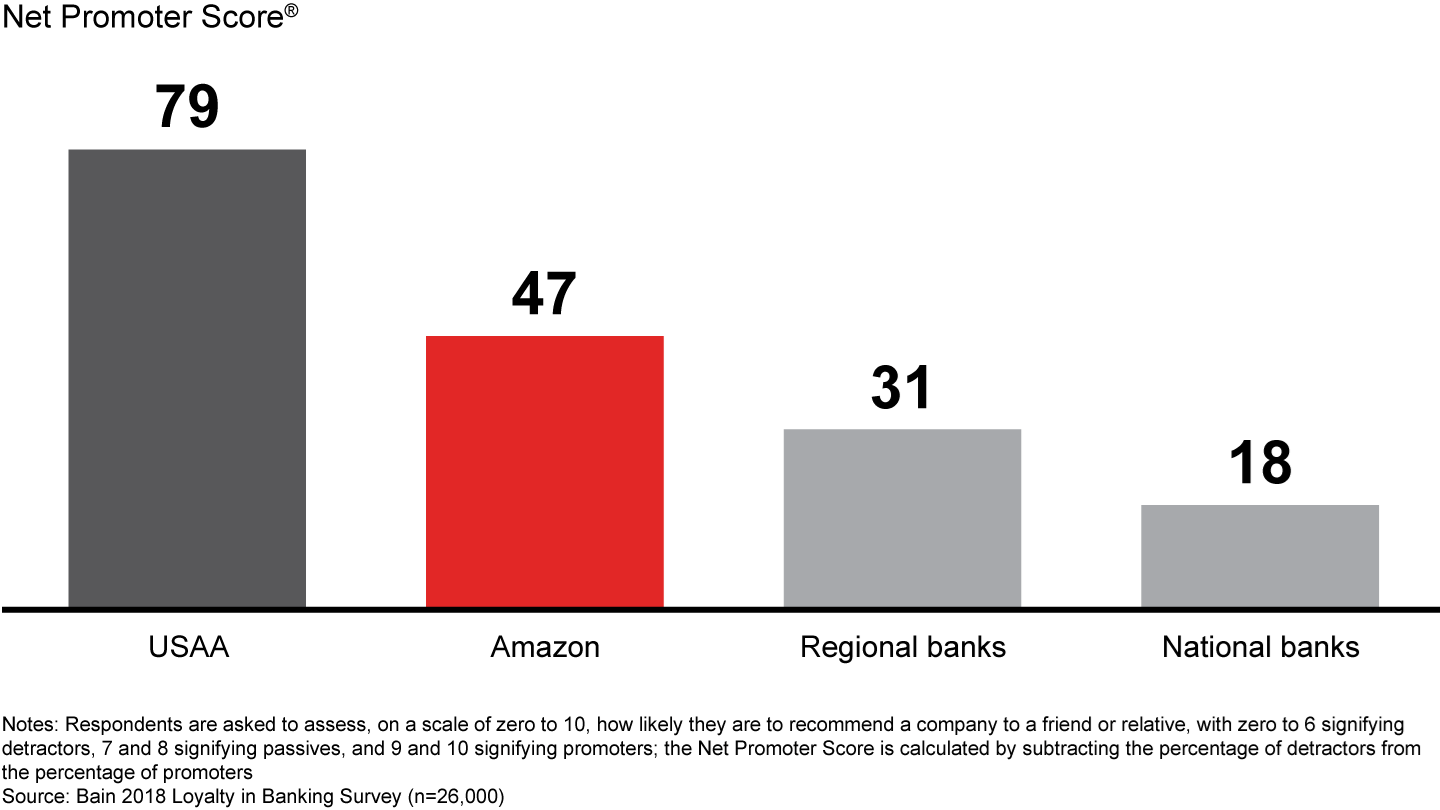
The company’s strong showing in loyalty—its Net Promoter Scores vary by product category, but it leads many of them—stems from two decades of a singular focus on improving the customer experience. While generally ranked first in customer satisfaction among retailers, the company rarely compares itself to any particular vertical industry as it has spread into a broad range of markets.
Our survey suggests that Amazon can count on significant demand for basic banking services. Among Amazon Prime respondents (who pay an annual fee for such perks as free two-day shipping), 65% say they would try a free online bank account offered by Amazon, with 2% cash back on Amazon purchases, similar to the company’s cobranded credit card. Of Amazon customers who aren’t Prime members, 43% would try such an account. Even among people who don’t use Amazon for e-commerce purchases today, 37% would try it (see Figure 2).
Amazon Prime subscribers are much more likely to open a banking account with Amazon

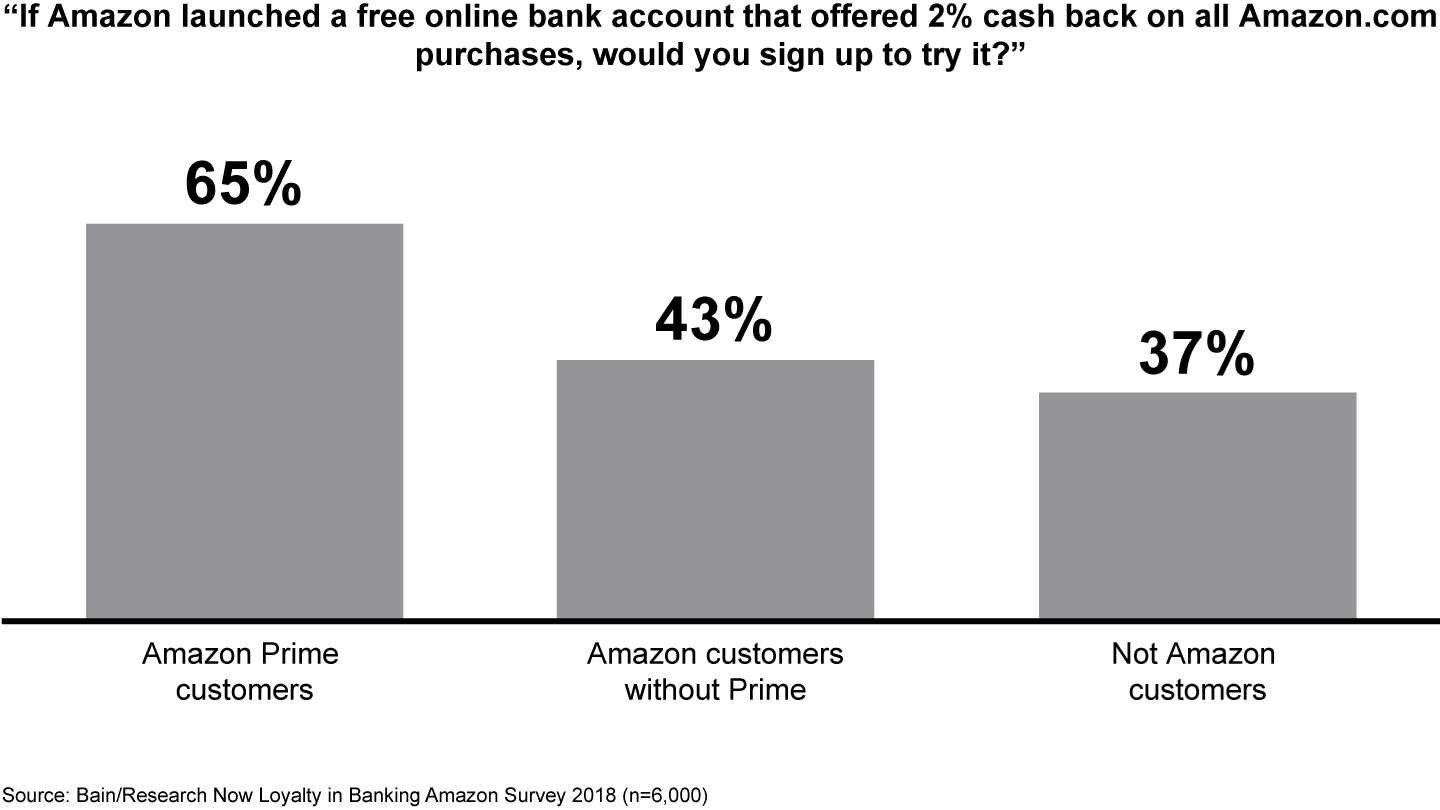
Customers interested in banking with Amazon skew younger and slightly higher income than average (see Figure 3). Those who use only digital direct channels for payment also express more interest than average in Amazon’s entry. It’s worth noting, though, that even among younger consumers, who have the highest adoption of digital-only payments, the majority still use cash and checking as well (see Figure 4).
Customers interested in banking with Amazon tend to be younger and have slightly higher income

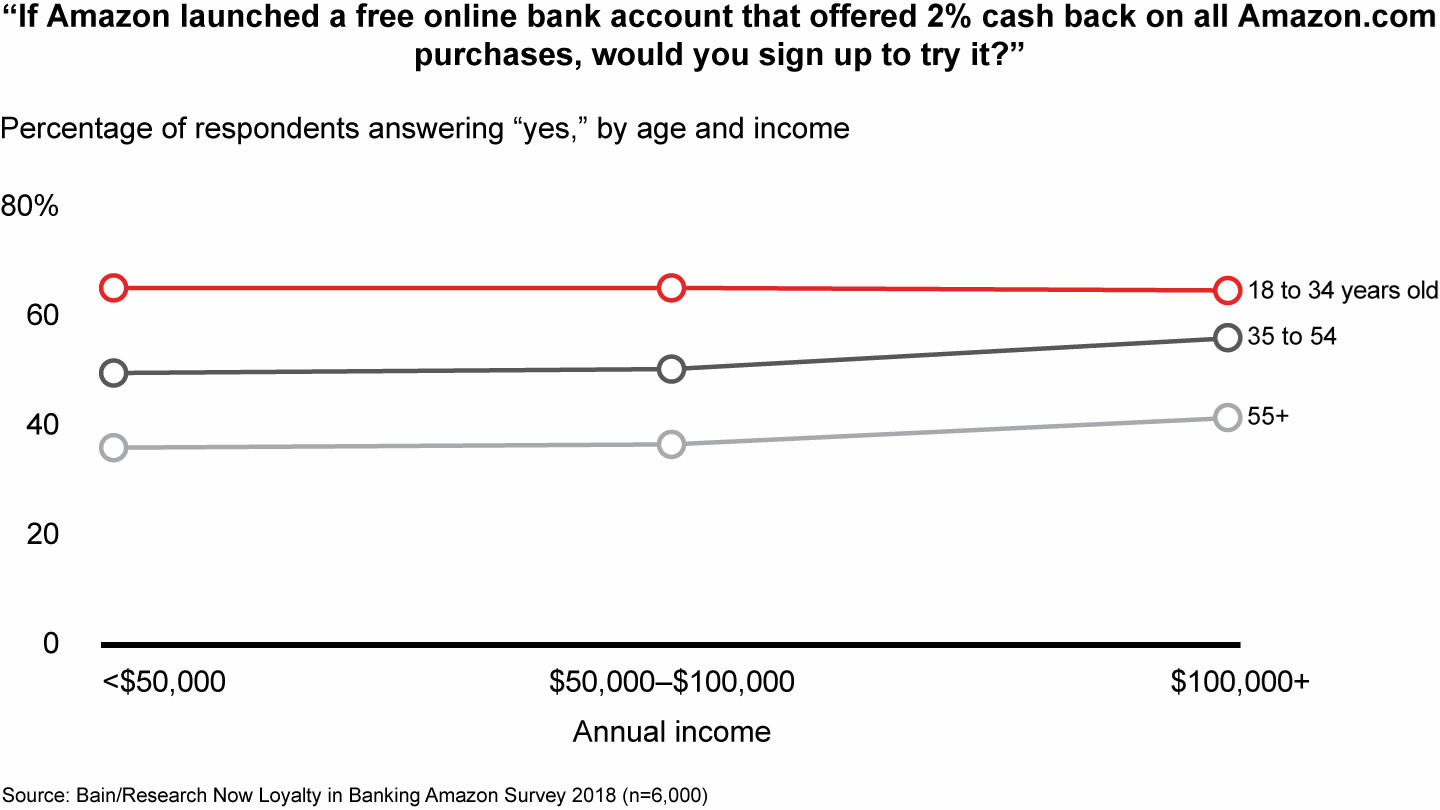
Younger consumers are the most likely to make digital payments, yet most also continue to use cash and checks

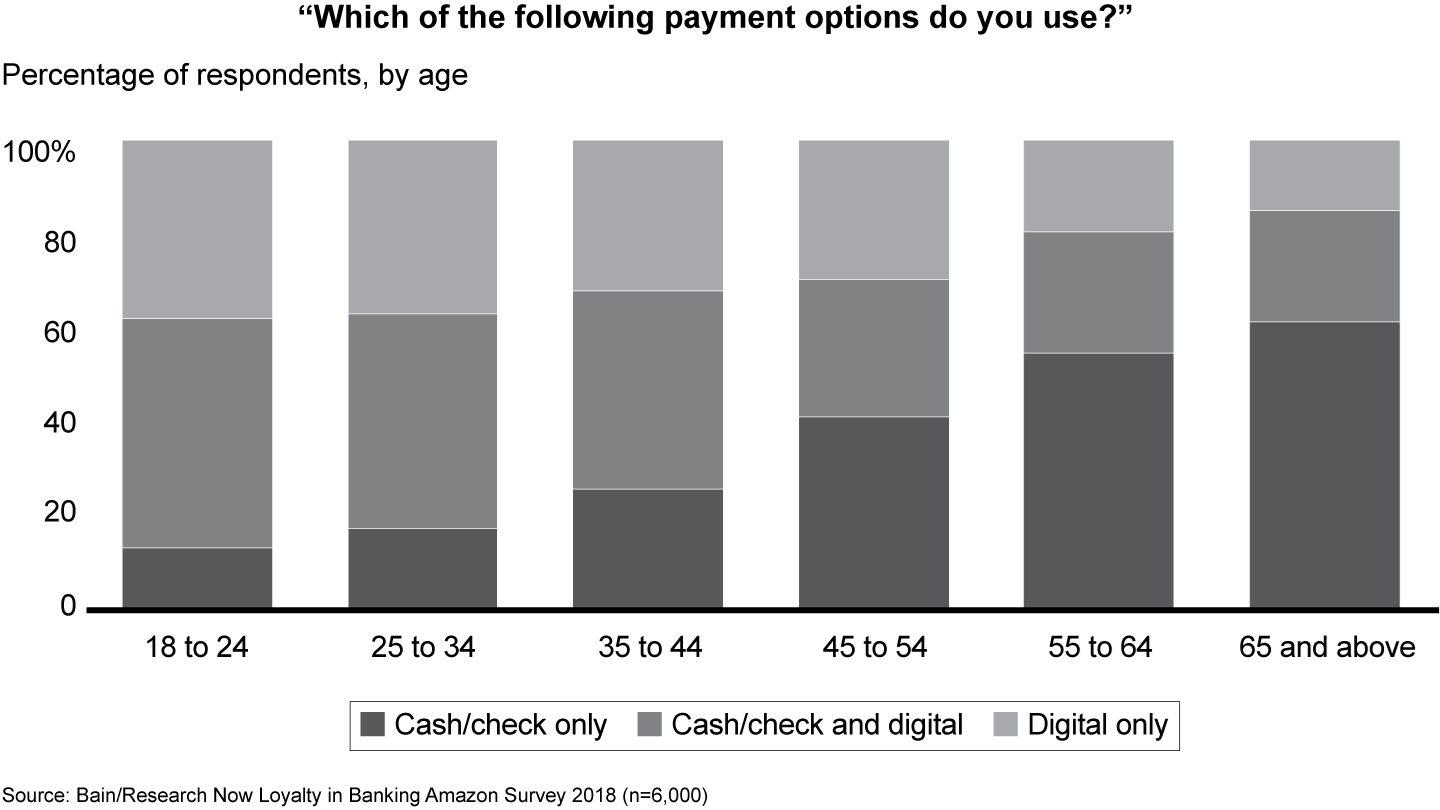
For banks, the level of customer loyalty will likely serve as a leading indicator of defection. The more displeased consumers are with their bank, the more willing they are to consider Amazon. Among respondents who are already Amazon customers, those interested in banking with Amazon give the company a higher Net Promoter Score than those who aren’t interested. For respondents who don’t already have a relationship with Amazon, the more displeased they are with their bank, the more willing they are to consider Amazon: banks’ Net Promoter Score is 17 among those in the group willing to try Amazon vs. 29 among those who aren’t.
The loyalty leader that isn’t Amazon
Despite its advantages, Amazon—and by extension, other technology firms—is by no means invincible. For example, perennial loyalty leader USAA has a Net Promoter Score of 79, compared with Amazon’s 47. USAA may have a unique customer base in its military community, but some of its characteristics are shared by other direct banks such as Ally, Charles Schwab and Capital One 360. Many of the direct banks have simplified their product line and processes, saving consumers time and effort. USAA also provides access to a broader ecosystem of services, such as car buying. Direct banks appeal to digitally savvy individuals who prefer app-based banking services, and to those looking for more competitive interest rates and fees.
Still, the threat from Amazon is real and imminent. Moving into basic banking would not only save Amazon on interchange costs, but also give it more direct influence and insight into customers’ finances and spending, rather than having banks as the intermediary. The bank account could become a platform for a whole new range of services for a company that already has enormous reach among America’s most valuable banking customers. Our survey shows that Amazon customers control 75% of US household wealth, with Prime subscribers controlling about 45% of wealth. Moreover, Amazon customers account for about 75% of the wealthiest households’ assets (see Figure 5).
Banks’ most valuable customers have deep relationships with Amazon

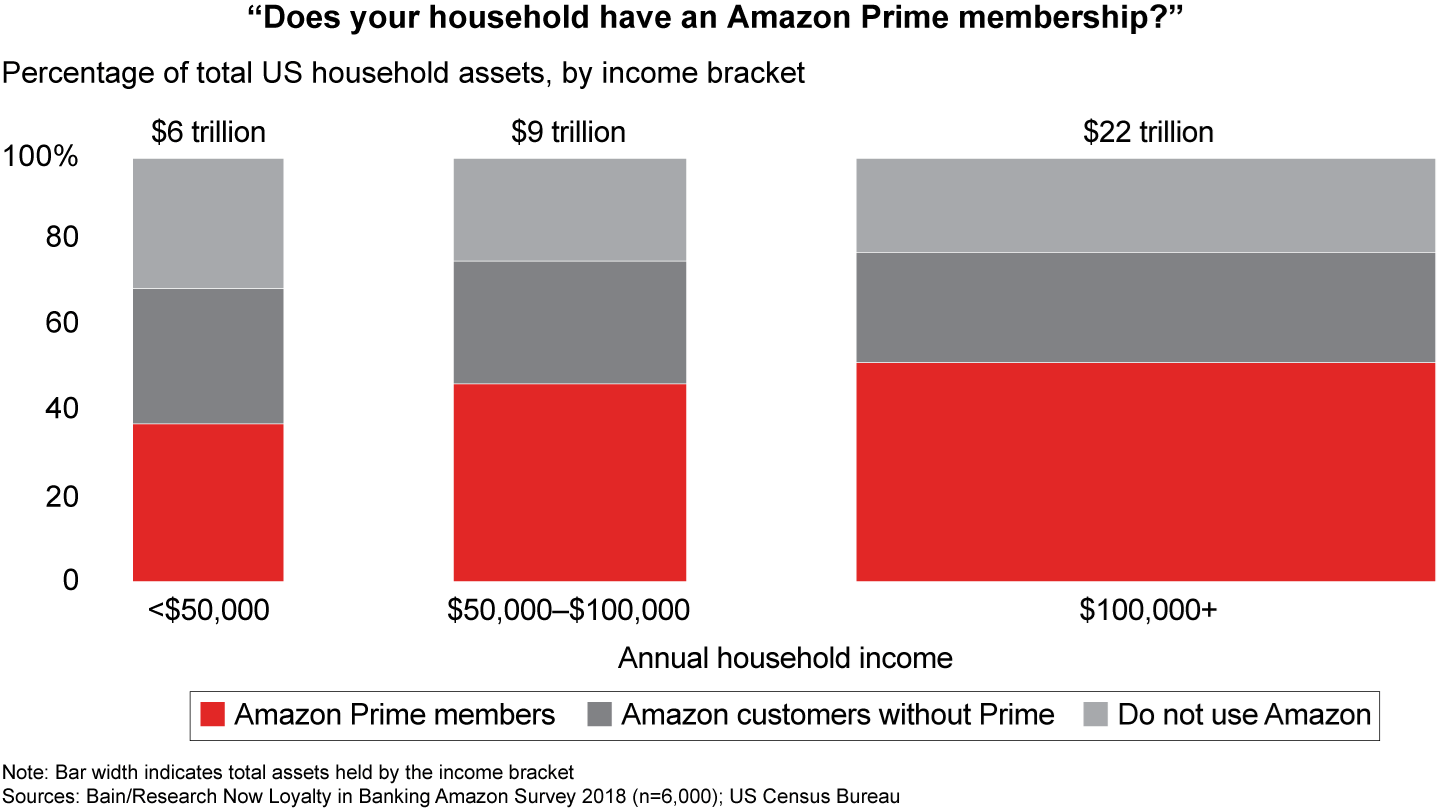
Amazon has repeatedly broken into new markets that were both ripe for disruption and increased the value of Amazon’s consumer ecosystem. For instance, half of Amazon Prime customers also use a dedicated Amazon media device such as a Kindle or Fire TV. And about one-third of Prime subscribers use an Amazon payment method such as a cobranded Visa credit card or Amazon Cash (see Figure 6).
Amazon’s secondary product offerings have gained traction with Prime subscribers

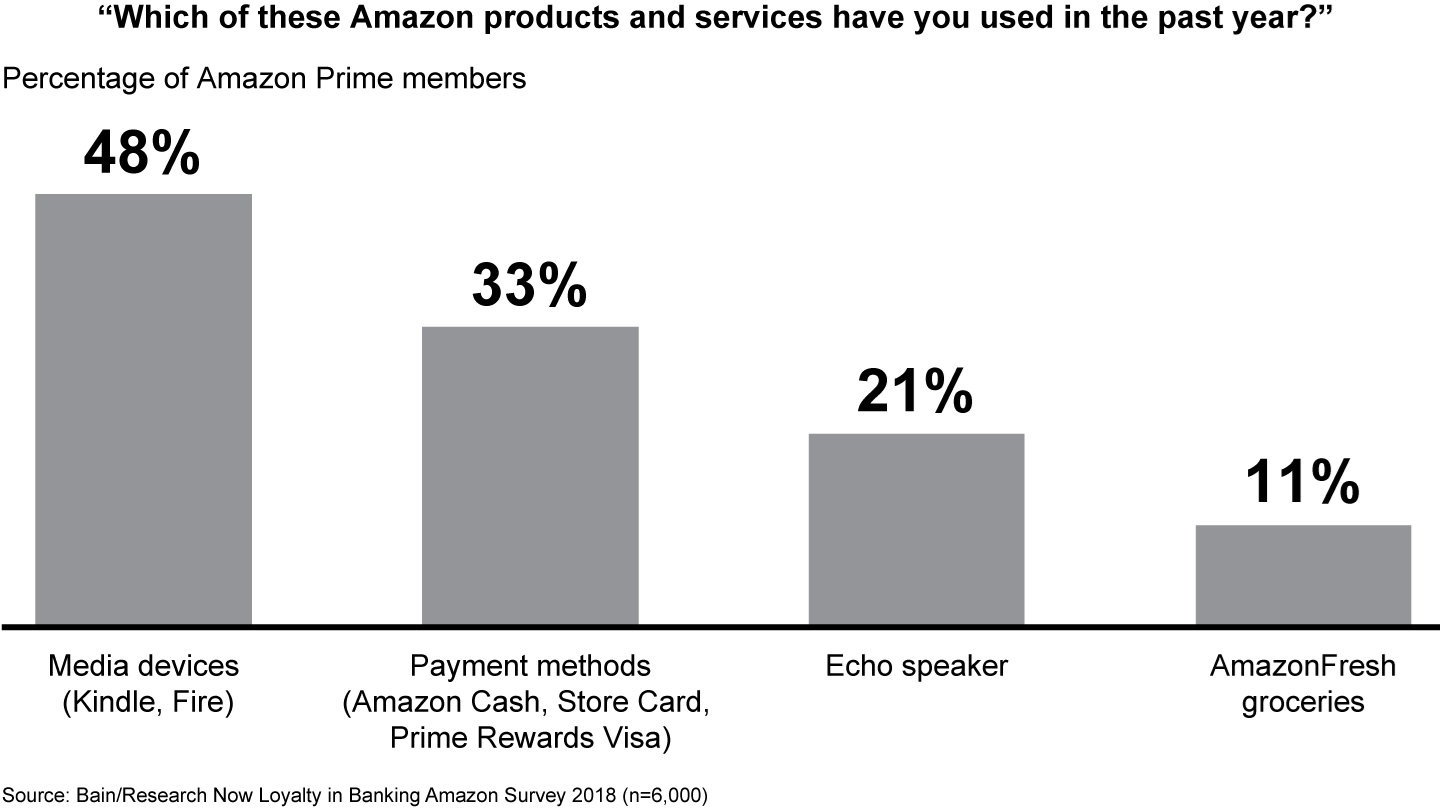
The experience of Alibaba in China proves that a technology firm can succeed quickly on a large scale in financial services. Over just four years, Alibaba’s repository for leftover cash from online spending became the largest money-market fund in the world, through its Ant Financial unit. Ant Financial has since moved further into consumer credit, with at least $95 billion in outstanding loans reported earlier this year.
For retail banks, the key lesson is that their main competition consists not of traditional banks, but rather the large technology firms such as Amazon that have upended entire industries. Tech firms have already reset customer expectations for what a good experience feels like, and Amazon’s expected entry into core banking heightens the urgency of accelerating work to improve the customer experience, largely by making it simpler and more digital. This might include connecting products and customer support to Alexa, Amazon’s cloud-based voice service.
However, digital channels don’t replace the need for a human touch, especially at critical episodes such as resolving a fraudulent transaction, so banks will want to refine their employees’ skills and deployment. They’ll also need to innovate with their offerings, adding new features to compete with the new entrants. All, of course, while continuing to take out “bad” costs and complexity that persist from years of branch-centered operations. That’s the recipe for banks to regain the customer advocacy they need to thrive during the next Amazon moment.
Gerard du Toit is a partner with Bain & Company’s Financial Services practice and leads the firm’s banking sector in the Americas. He is based in Boston. Aaron Cheris is a partner and leads Bain’s Retail practice in the Americas. He is based in San Francisco.
Net Promoter Score®, Net Promoter System®, Net Promoter® and NPS® are registered trademarks of Bain & Company, Inc., Fred Reichheld and Satmetrix Systems, Inc.